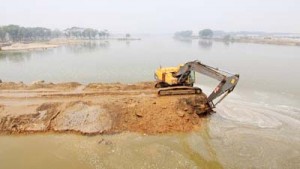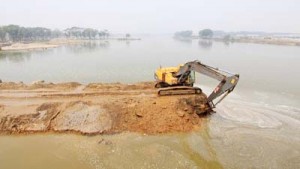China boosts government-backed lending to Asia in quest to build new Silk Road
Financial Times
James Kynge
 China’s quest for economic centrality in Asia and its ambition to become a global maritime power are emerging as twin priorities within the “One Belt One Road” (OBOR) initiative, a grand strategic plan through which Beijing hopes to create markets for its products and boost its influence overseas.
China’s quest for economic centrality in Asia and its ambition to become a global maritime power are emerging as twin priorities within the “One Belt One Road” (OBOR) initiative, a grand strategic plan through which Beijing hopes to create markets for its products and boost its influence overseas.
A new study by Grisons Peak, a London-based investment bank, shows a sharp increase in government-backed Chinese lending to Asia since the OBOR initiative was announced in the autumn of 2013 by President Xi Jinping. Similarly, official lending to countries around the maritime routes sketched out in OBOR has also been vigorous, the study shows.
“The most recent data show a clear shift towards Asia in OBOR lending, with Indonesia, Pakistan, India, Sri Lanka, Vietnam and Cambodia all in the top 20 recipients,” said Henry Tillman, chairman and chief executive of Grisons Peak.
Among 172 loans worth a total of $101.8bn extended by Chinese policy banks and other government-backed institutions in OBOR-related countries between 2013 and 2015, the lion’s share went to Asia, according to the bank’s China Investment Research unit.
The proportion of such loans by value that went to Asian countries surged to 51 per cent of total OBOR-related loans in 2015 from 27 per cent in 2013 (see chart). Correspondingly, the proportion of loans by value to African countries fell to 29 per cent in 2015 from 51 per cent in 2013, the Grisons Peak study shows.
Many of the key recipients of government-backed lending in Asia — and beyond — are on important sea routes, reinforcing Beijing’s maritime ambitions. Indonesia, which lies along the strategic Strait of Malacca, was the second largest recipient of Chinese government-backed lending over the 2013 to 2015 period, Grisons Peak found. Pakistan, India, Sri Lanka and Bangladesh were also leading recipients.
China’s official maritime ambitions were articulated in 2012 by former president Hu Jintao, who saw the combined need for Beijing to develop a marine economy and resolutely protect its “maritime rights and interests”. These aims have since also been blended into OBOR, analysts said.
Li Jun, professor and deputy dean of the OBOR Research Institute at Tsinghua University in Beijing, said: “The 21st century is the century of the oceans and we can explore ways to do this together with our partners in the One Belt One Road countries.”
“We need to concentrate on ‘blue development’. In China we call this our strategy to become a maritime power,” Prof Li said.
The OBOR initiative was announced in 2013 by Mr Xi, who foresaw a leading role for China in financing and building infrastructure along a land-based “Silk Road Economic Belt” and its maritime counterpart, the “21st century Maritime Silk Road” in more than 60 countries in Asia, Europe and Africa with a combined population of some 4.4bn.
In this sense, OBOR became an overarching — and often vague — umbrella concept for China’s economic outreach. The geographic scope of the project has been kept intentionally elastic, leaving the door open for other regions — including possibly Latin America — to be included in the initiative at a later date, according to Chinese officials, who declined to be named.
The trajectory of Chinese government-backed lending to OBOR-related areas shows a sharp uptrend since 2013 (see chart), showing the influence that the initiative is having on policy banks and the state-owned construction and infrastructure companies that implement projects once financing is in place.
Grisons Peak said it had included in its study only loans from Chinese policy banks and other state institutions that have been signed by the relevant Chinese institution and validated by authorities in recipient countries.
It adopted a broad geographic definition of OBOR in its study, but excluded Latin America, where Chinese government-backed lending was also robust in 2015 even as the economic gloom in Brazil, Venezuela, Ecuador and elsewhere deepened and multilateral lenders such as the World Bank and Inter-American Development Bank cut lending by 5 per cent and 14 per cent respectively.
According to data collected by Boston University’s Global Economic Governance Initiative and the Washington-based think-tank The Inter-American Dialogue, the China Development Bank and the Export-Import Bank of China provided upwards of $29bn to Latin American governments in 2015 — even as the World Bank and Inter-American Development Bank cut lending in 2015 by 5 per cent and 14 per cent respectively.
Kevin Gallagher, author of The China Triangle, a book on Latin America’s China boom, said that China’s support for the continent during a time of economic distress was showing up the western-backed development banks for their failure to “provide the countercyclical finance that justifies their very existence”.
Christopher Johnson, a China expert at the Center for Strategic and International Studies, a Washington-based think-tank, also sounded a warning over China’s rising influence. “It seems equally clear that Washington has been slow to recognise the intricate lattice that the Silk Road projects are forming,” Mr Johnson wrote in a new paper on OBOR.
He recommended that the US administration due to take power in 2017 should think about how best to respond to OBOR as it becomes a “force to be reckoned with for the next decade and beyond”.




